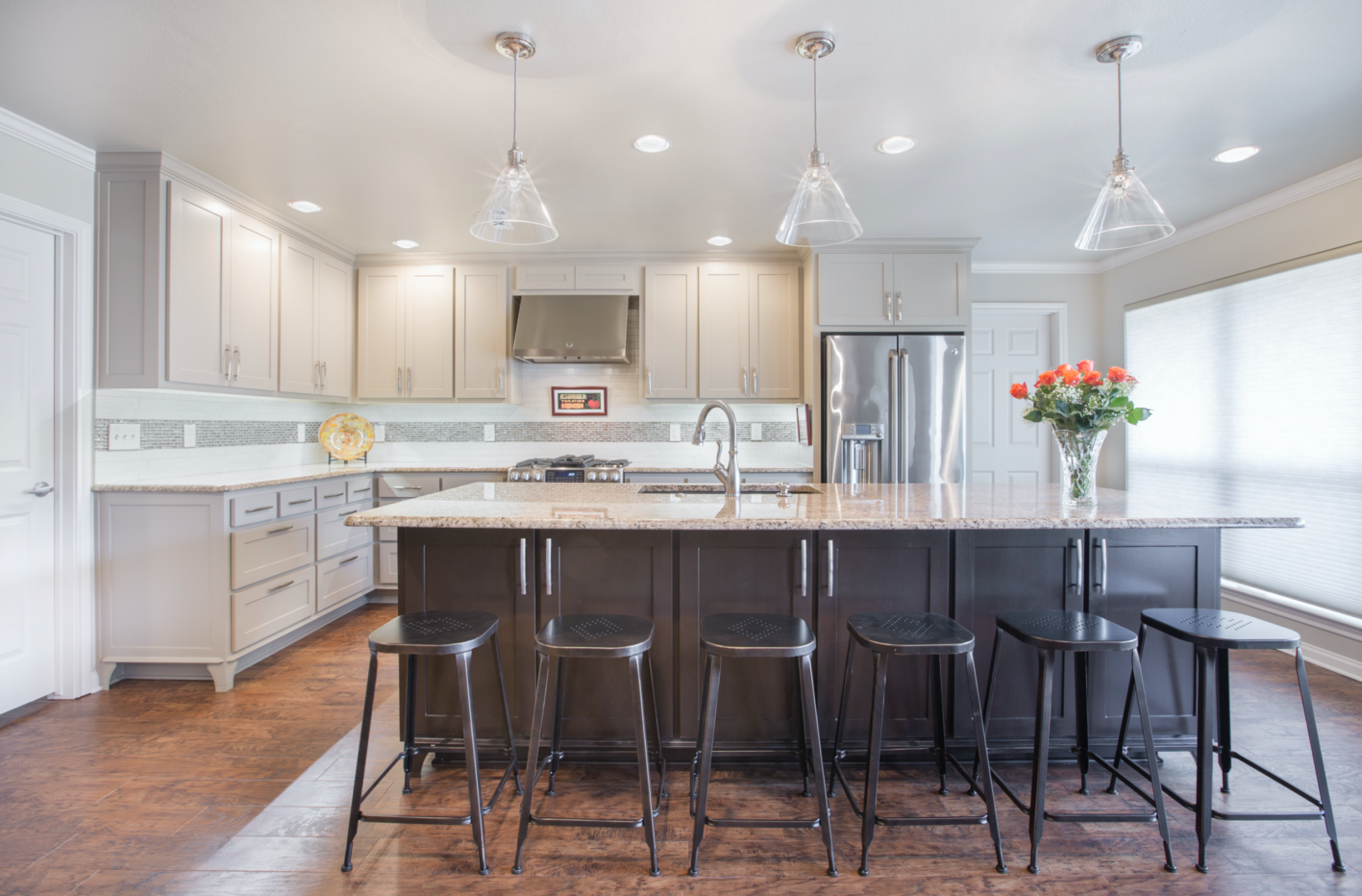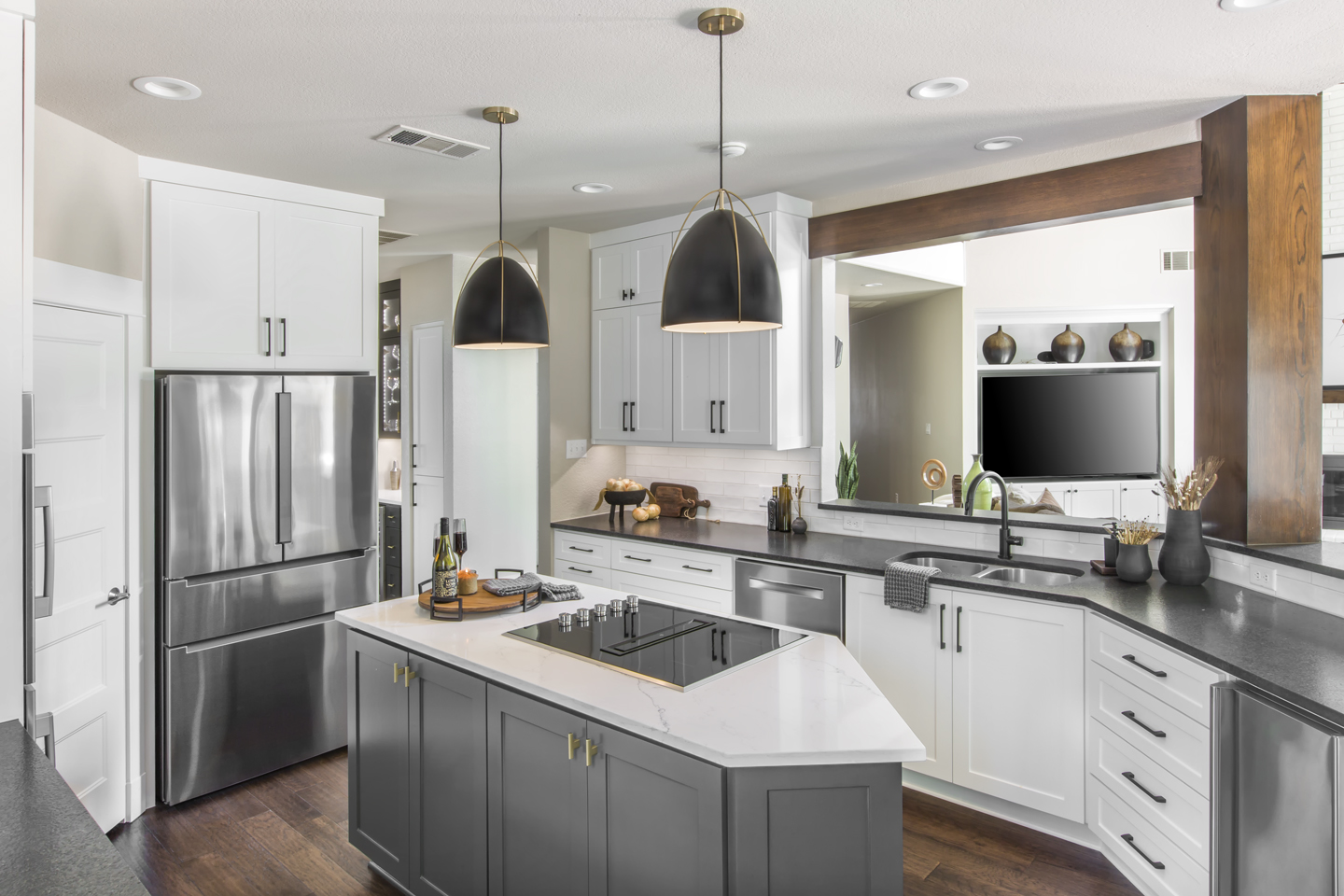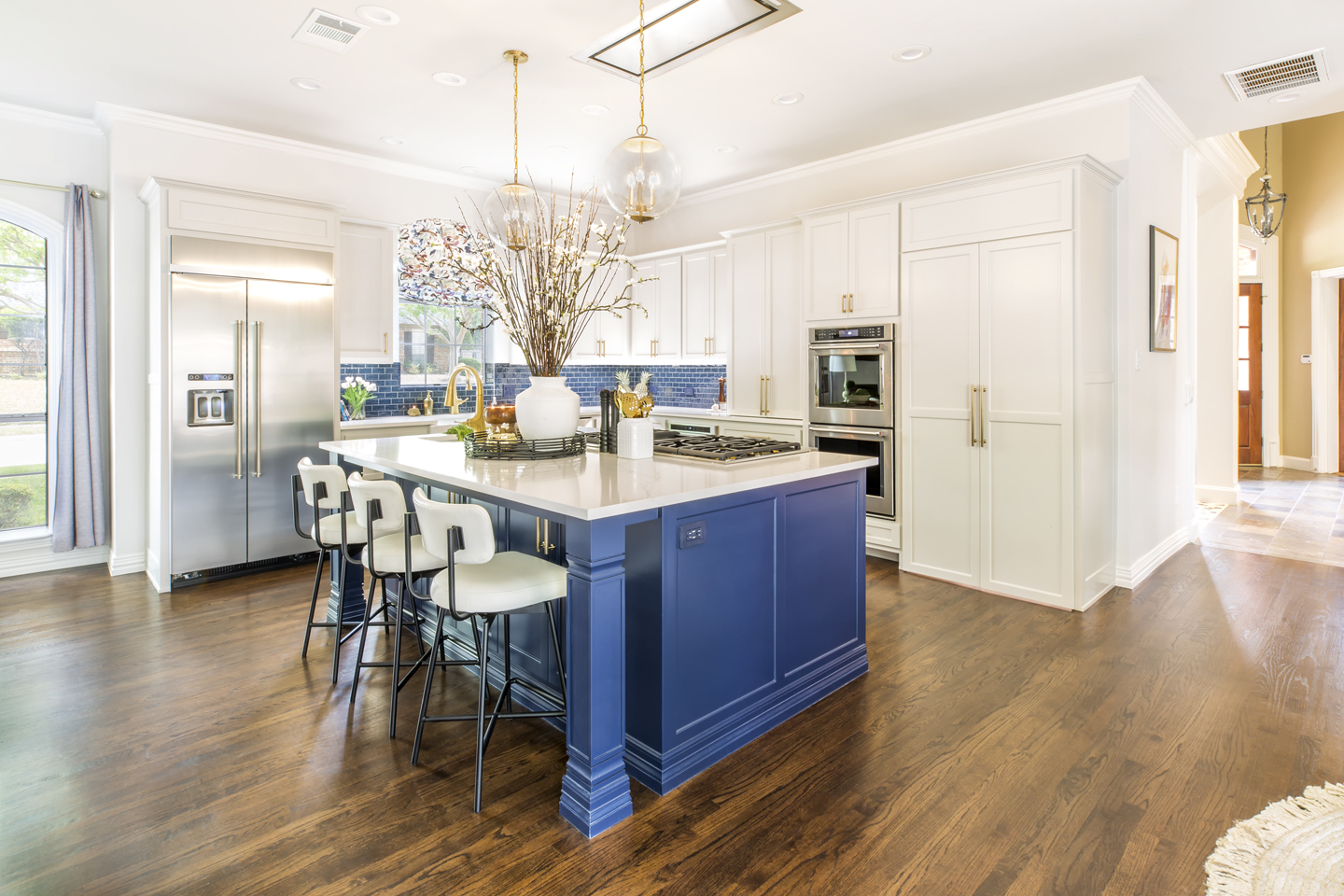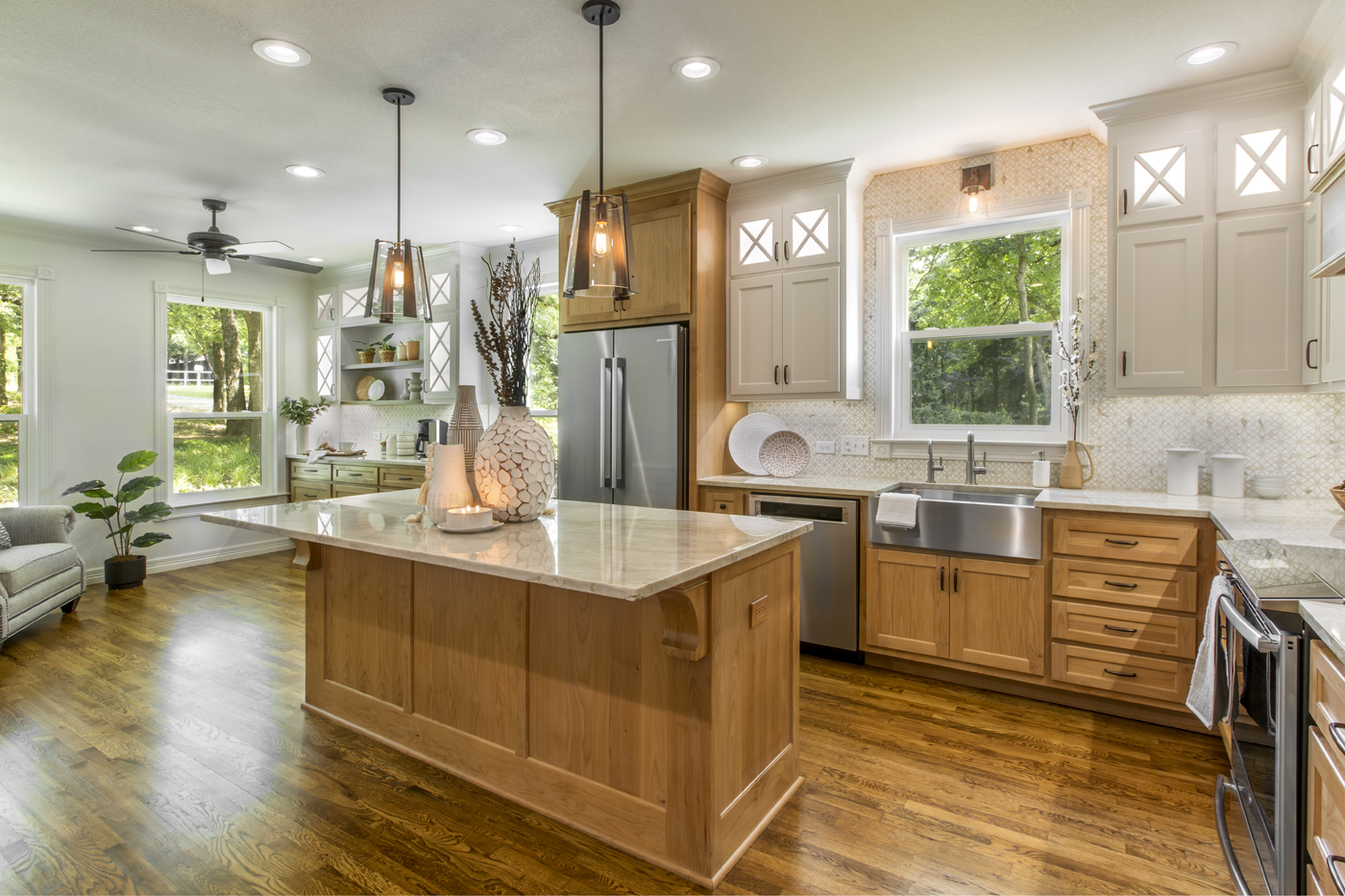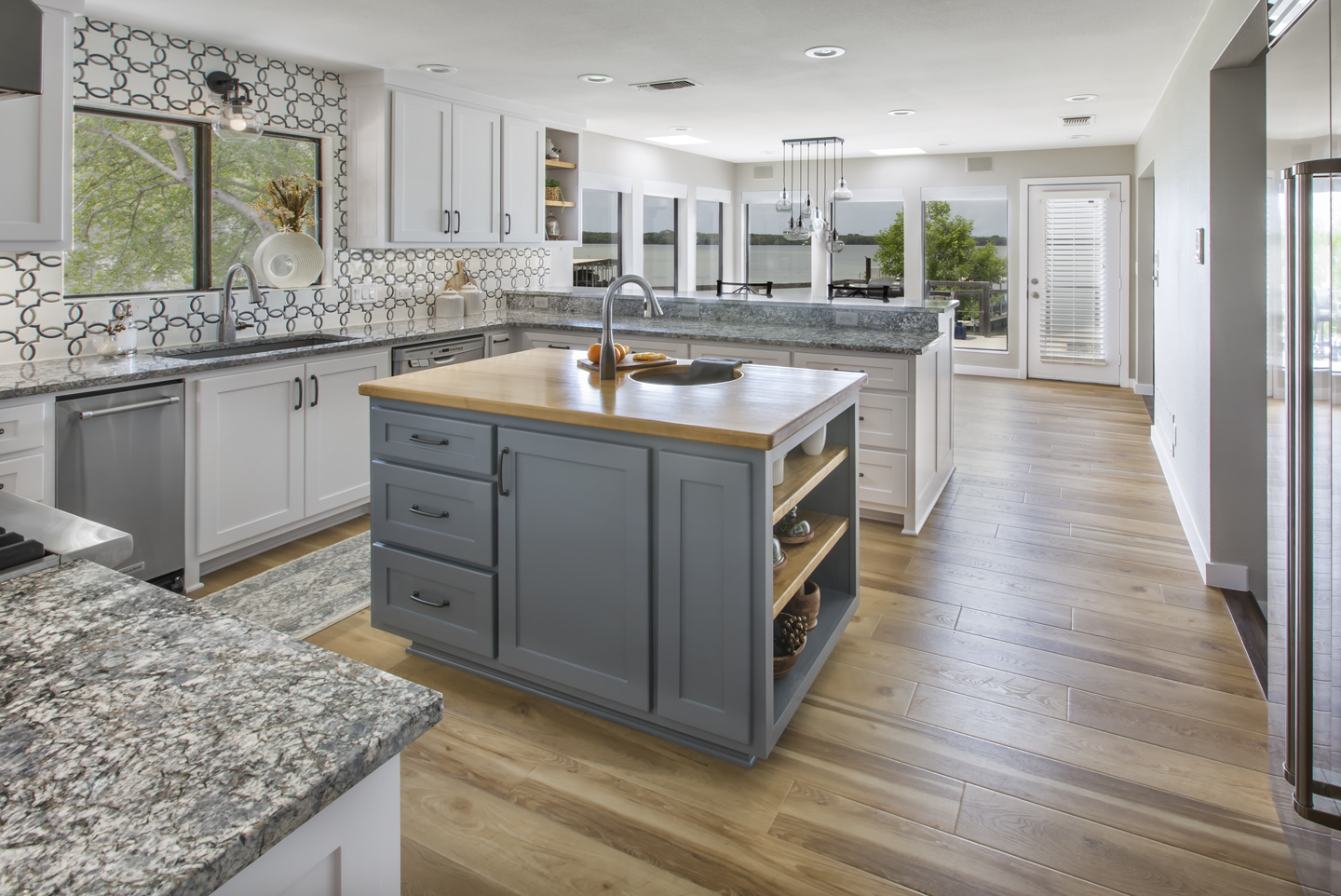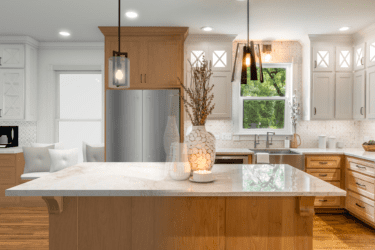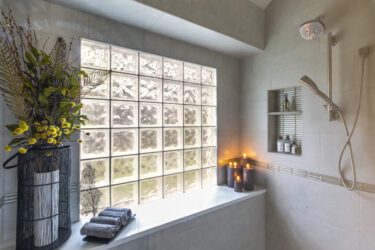A kitchen island isn’t just a piece of furniture — it’s a centerpiece that can transform the look and feel of your entire cooking space! Whether you’re renovating your kitchen or building one from scratch, deciding whether to include an island and how to design it can be one of the most exciting and functional choices you’ll make. From adding extra counter space to creating a gathering spot for family and friends, kitchen islands offer a range of benefits. But with so many styles, sizes, and features to choose from, it’s easy to feel overwhelmed.
In this guide, we’ll explore the many ways a kitchen island can enhance your cooking experience, how to select the perfect island for your space, and key design tips to make sure it complements your overall kitchen layout.
Why You Need a Kitchen Island
The advantages of having a kitchen island are numerous, and they extend well beyond aesthetic appeal. Here are some key reasons why an island might be a perfect addition to your kitchen:
- Additional Storage
A kitchen island is a great way to increase storage space in your kitchen. Most islands include cabinets or drawers underneath the countertop, offering room for everything from cookware to pantry items, utensils, or even wine. This can help clear clutter and create a more organized kitchen.
- Extra Counter Space
In smaller kitchens where counter space is limited, an island can act as a much-needed prep station. It provides room for chopping, mixing, or plating food. Even in larger kitchens, an island serves as a versatile area for multitasking, from meal prep to setting down groceries.
- Seating and Entertaining
A kitchen island with seating allows for casual dining, chatting with guests, or helping kids with homework while preparing dinner. Depending on your kitchen’s layout, a well-designed island can accommodate stools, making it the perfect spot for quick meals or socializing during a gathering.
- Enhanced Workflow
A strategically placed kitchen island can improve the kitchen work triangle (the optimal layout between the stove, sink, and refrigerator). By positioning the island near these key areas, you can enhance efficiency in the kitchen, making cooking and cleaning up a smoother process.
Types of Kitchen Islands
Kitchen islands come in all shapes and sizes, and they can be customized to suit your kitchen’s needs. Here are some of the most popular types of islands to consider:
- Standard Islands
These islands are typically rectangular and freestanding. They offer plenty of workspace and storage, and they can be designed to match the kitchen’s style. Standard islands work best in larger kitchens, as they require space to be positioned properly for flow and functionality.
- Peninsula Islands
A peninsula island is similar to a standard island but is attached to one side of the kitchen. It offers the same benefits of extra counter space and storage but is a great option for kitchens that are short on space. A peninsula can create a natural barrier between the kitchen and dining area, making it ideal for open-concept layouts.
- Mobile Islands
If you need flexibility, a mobile or rolling kitchen island could be the answer. These portable units can be moved to different areas of the kitchen, offering temporary counter space when needed. They’re ideal for small kitchens or those who need extra space on occasion, such as for large meals or gatherings.
- U-Shaped Islands
In larger kitchens, a U-shaped island is a showstopper. It extends from the main cabinetry and wraps around to form a U-shape, offering tons of counter space and storage. This layout is perfect for those who do a lot of cooking and need room for multiple people to work at once.
Design Considerations for Your Kitchen Island
Once you’ve decided on the type of island that suits your space, the next step is to design it. The look and function of the island should complement your kitchen’s overall style while enhancing its usability. Here are some things to consider:
- Size and Proportions
The size of the island should be proportional to your kitchen. A good rule of thumb is to leave at least 42 to 48 inches of clearance around the island to allow for easy movement. If your kitchen is on the smaller side, consider a more compact island or a rolling cart, whereas larger kitchens can accommodate a more expansive island.
- Materials and Finishes
The material of the island will impact both its functionality and aesthetic. Common countertop materials include granite, quartz, marble, butcher block, and concrete. Each has its pros and cons depending on the use case — for example, butcher block is great for food prep, while quartz is durable and low-maintenance. Choose a material that suits both your cooking habits and design preferences.
- Incorporating Seating
If you plan to include seating, make sure your island is designed to accommodate it. Depending on the height and style of the island, you can incorporate counter-height stools or bar chairs. Consider how many people you’d like to seat and leave enough space between stools to ensure comfort and movement.
- Lighting
Lighting is key to showcasing your island and making it functional at all times of day. Pendant lights are a popular choice above kitchen islands because they provide ample illumination and add visual interest. Consider installing adjustable lights to control the intensity based on your needs — bright for food prep, softer for dining.
- Appliances and Utilities
For the ultimate in convenience, some people opt to integrate appliances or utilities directly into the island. This could include a cooktop, sink, or even a wine fridge. While these features can boost functionality, they can also increase complexity and cost, so it’s important to plan accordingly.
Trends in Kitchen Island Design
Kitchen island trends have evolved over the years, with new innovations and design aesthetics emerging. Here are a few of the latest trends to consider when designing your island:
- Two-Tone Islands
One of the most popular trends in recent years is two-tone islands. This involves choosing a different color or material for the island base and countertop, creating a striking contrast. For example, a white or light-colored base with a dark wood or stone top can add depth and character to the kitchen.
- Sustainable Materials
Eco-friendly and sustainable materials are becoming increasingly popular in kitchen design. Islands made from reclaimed wood, bamboo, or recycled materials offer a stylish and environmentally-conscious alternative to traditional options.
- Minimalist Design
For a sleek, modern look, many homeowners are opting for minimalist kitchen islands. These designs focus on clean lines, hidden storage, and a simple, unobtrusive look. Floating islands — those with no visible legs or supports — are also gaining popularity.
- Integrated Technology
Smart kitchen technology is increasingly making its way into kitchen islands. From built-in charging stations and touchless faucets to integrated speakers and smart lighting, technology can help elevate your kitchen’s functionality and modern appeal.
A well-designed kitchen island is more than just a stylish addition — it’s a functional, multi-purpose workspace that enhances your kitchen’s efficiency and versatility. Whether you’re looking for extra storage, additional seating, or simply a beautiful focal point for your kitchen, the right island can make a world of difference.
When designing your kitchen island, keep in mind the space, materials, style, and functionality that work best for your needs. With assistance from a professional design-build firm, like Medford, you can create an island that enhances your kitchen both aesthetically and practically — making it the heart of your home for years to come!
Contact us today for more information about remodeling your kitchen; we’d be happy to set up an on-site consultation with one of our designers.
Warm Regards,
The Medford Team

